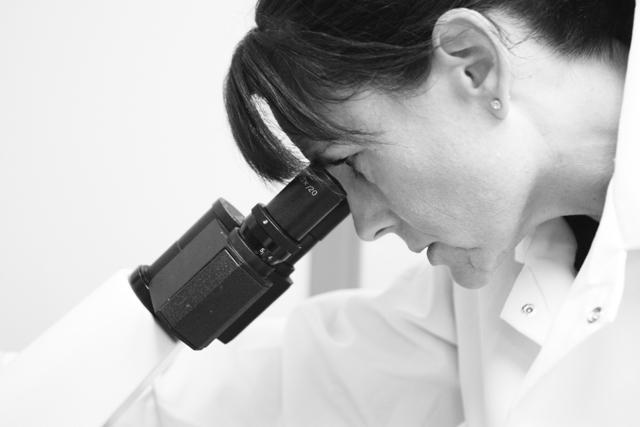In the past, medical research entailed working with what you had. Not until recently have doctors considered growing new cells, tissues and organs. Dr. Anthony Atala and researchers at N.C . State are working to create these living tissues, rather than using artificial supplements or “borrowed” samples.
The research draws parallels with the story of Dr. Frankenstein.
The Wake Forest Institute for Regenerative Medicine has been an international leader in this specific field since Dr. Atala and his colleagues successfully “created” bladders and implanted them back into the bodies of patients.
The Center for Comparative Medicine and Translational Research at N.C . State has formed a partnership with WFIRM in hopes of using this breakthrough knowledge of cells to regenerate damaged organs in humans and companion animals.
The CCMTR works “to promote scientific discovery and facilitate its clinical application to achieve the goal of improving the health of animals and humans,” according to its mission statement. Translational research aims at being patient-centric. CCMTR has an ongoing collaboration with Duke, UNC-Chapel Hill, the Environmental Protection Agency and the National Institute for Environmental Health Sciences.
Jorge Piedrahita , professor of genomics and the interim director of CCMTR , said this partnership will encourage collaboration and bring new technology to the veterinary field.
CCMTR looks to break departmental barriers, as interdisciplinary approaches to medicine are becoming increasingly important, and the partnership will make that much easier, according to Piedrahita .
“We give scientists a place where they can interact on science alone, regardless of the department they belong to,” Piedrahita said. “The center is based on innovation and extreme expertise in the field of regenerative medicine.”
Piedrahita hopes the partnership will provide the CCMTR with more resources and even more expertise. Working with the scientists at WFIRM will “move things from the lab to the clinic [for use on patients] much faster,” according to Piedrahita .
“This part of research, the translational period, is what we hope to speed up,” Piedrahita said.
The complicated nature of the field of regenerative medicine also slows the lab-to-patient transition.
“It’s extremely complicated; the process involves a combination of biology, in the use of stem cells, but also engineering, material science, manufacturing, computer technology and graphic design,” Piedrahita said. “This shows the importance of interdisciplinary science.”
Elizabeth Loboa , professor of biomedical engineering and material science engineering and part of the executive committee for CCMTR , has direct experience with this complicated, interdisciplinary process.
“The research of my lab focuses more on the fate of human stem cells,” Loboa said. “The questions we may ask include ‘How can we mimic everything that happens inside the body?'”
Loboa is involved with this translational phase that Piedrahita discussed, where the actual building of muscle or bone has to be applied to living patients.
“We look to replicate the mechanical forces within the body that are applied to tissues, using the appropriate materials,” Loboa said. “We take human stem cells from UNC-Chapel Hill after liposuction, for example, and then place them into three-dimensional scaffolds that treat the cells as if they were in a human body, and this forms bone, cartilage or tendon ligaments.”
Loboa stressed the importance of a biomimetic approach, focusing on the structure and function of biological systems as models for the design and engineering of materials and machines, in this case, human tissues.
“We have to think about everything occurring inside the body, because you can’t successfully engineering anything in petri-dishes , especially when it’s as dynamically loaded as bone or cartilage,” Loboa said. “We have to apply tension, or compress the cells with hydrostatic pressure to make it feel [to the cells] as if they are in a human body and then this pushes them to start behaving like the cells within that area, cartilage, bone, muscle, etc.”
According to Loboa , this complex mechanical environment is determined by computer images to make it as physiologically realistic as possible. She the entire process, from the computer graphics to the building and growing of three-dimensional human tissue is definitely very interdisciplinary; they use engineers and cell biologists and together the two have to predict how cells, which all act differently, are going to behave.
“We can also apply everything we are learning in-vitro to both animals and humans, because the two are so similar,” Loboa said when considering the application of her work to the veterinary school.
Loboa said she agrees CCMTR and WFIRM definitely have overlapping areas of interest, considering Wake Forest’s success in the creation and implementation of human bladders.
Once the partnership is stronger, Piedrahita hopes to offer research opportunities for graduate students.
“The two teams [from NCSU and Wake Forest Medical Center] need to be stronger before students are brought into the program,” Piedrahita said. “But eventually we hope to offer very specialized training for graduate students getting their Ph.D.s , as well as for D.V.M . and M.D . students in the area of regenerative medicine.”
Piedrahita said the resources and expertise provided through the partnership will help the CCMTR to better pursue its goals, as the Center believes “the clinical needs of the patient should drive the developments of technology.” The two bodies will unite, hoping to discover breakthrough technology in regenerative medicine and make a significant impact on human health.








